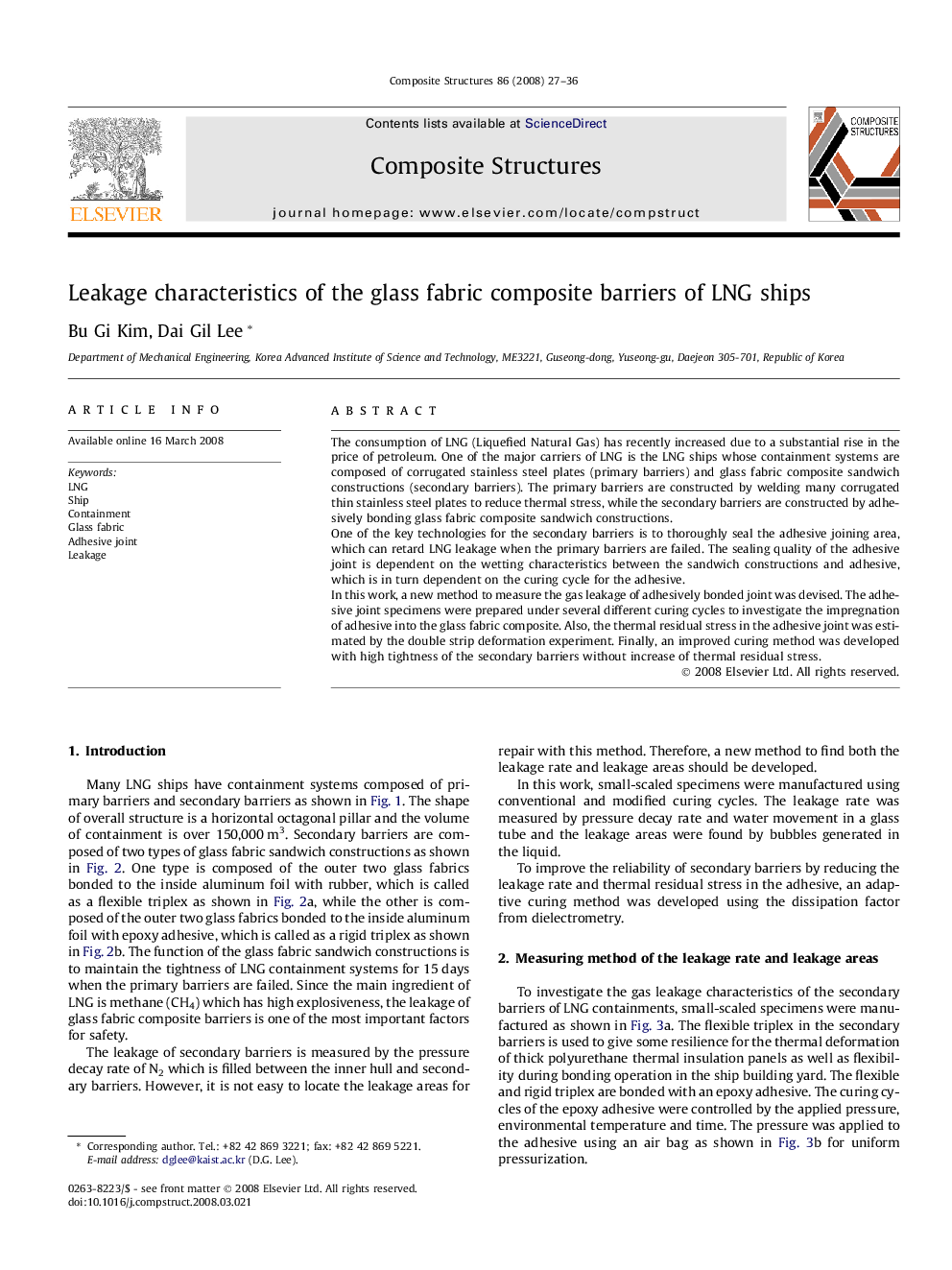| Article ID | Journal | Published Year | Pages | File Type |
|---|---|---|---|---|
| 253293 | Composite Structures | 2008 | 10 Pages |
The consumption of LNG (Liquefied Natural Gas) has recently increased due to a substantial rise in the price of petroleum. One of the major carriers of LNG is the LNG ships whose containment systems are composed of corrugated stainless steel plates (primary barriers) and glass fabric composite sandwich constructions (secondary barriers). The primary barriers are constructed by welding many corrugated thin stainless steel plates to reduce thermal stress, while the secondary barriers are constructed by adhesively bonding glass fabric composite sandwich constructions.One of the key technologies for the secondary barriers is to thoroughly seal the adhesive joining area, which can retard LNG leakage when the primary barriers are failed. The sealing quality of the adhesive joint is dependent on the wetting characteristics between the sandwich constructions and adhesive, which is in turn dependent on the curing cycle for the adhesive.In this work, a new method to measure the gas leakage of adhesively bonded joint was devised. The adhesive joint specimens were prepared under several different curing cycles to investigate the impregnation of adhesive into the glass fabric composite. Also, the thermal residual stress in the adhesive joint was estimated by the double strip deformation experiment. Finally, an improved curing method was developed with high tightness of the secondary barriers without increase of thermal residual stress.
